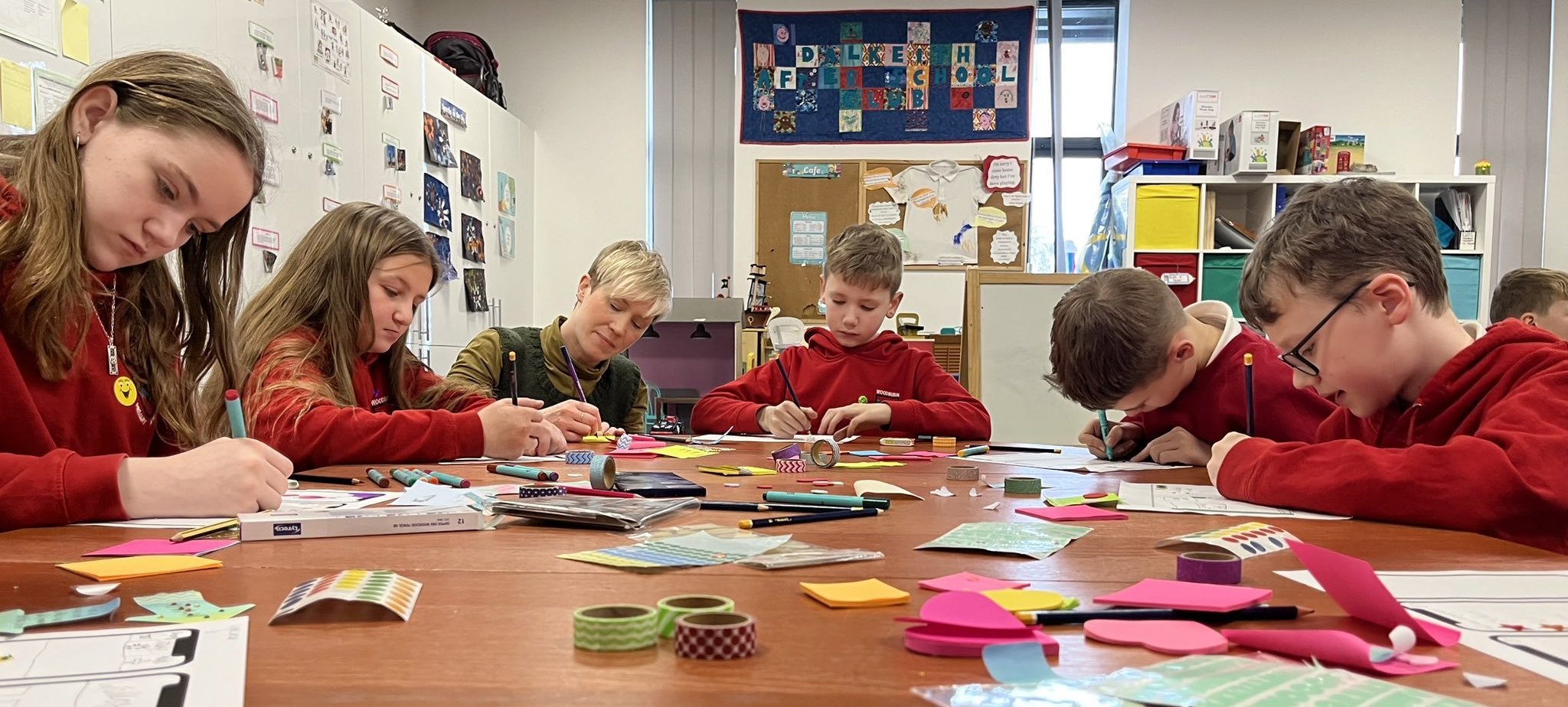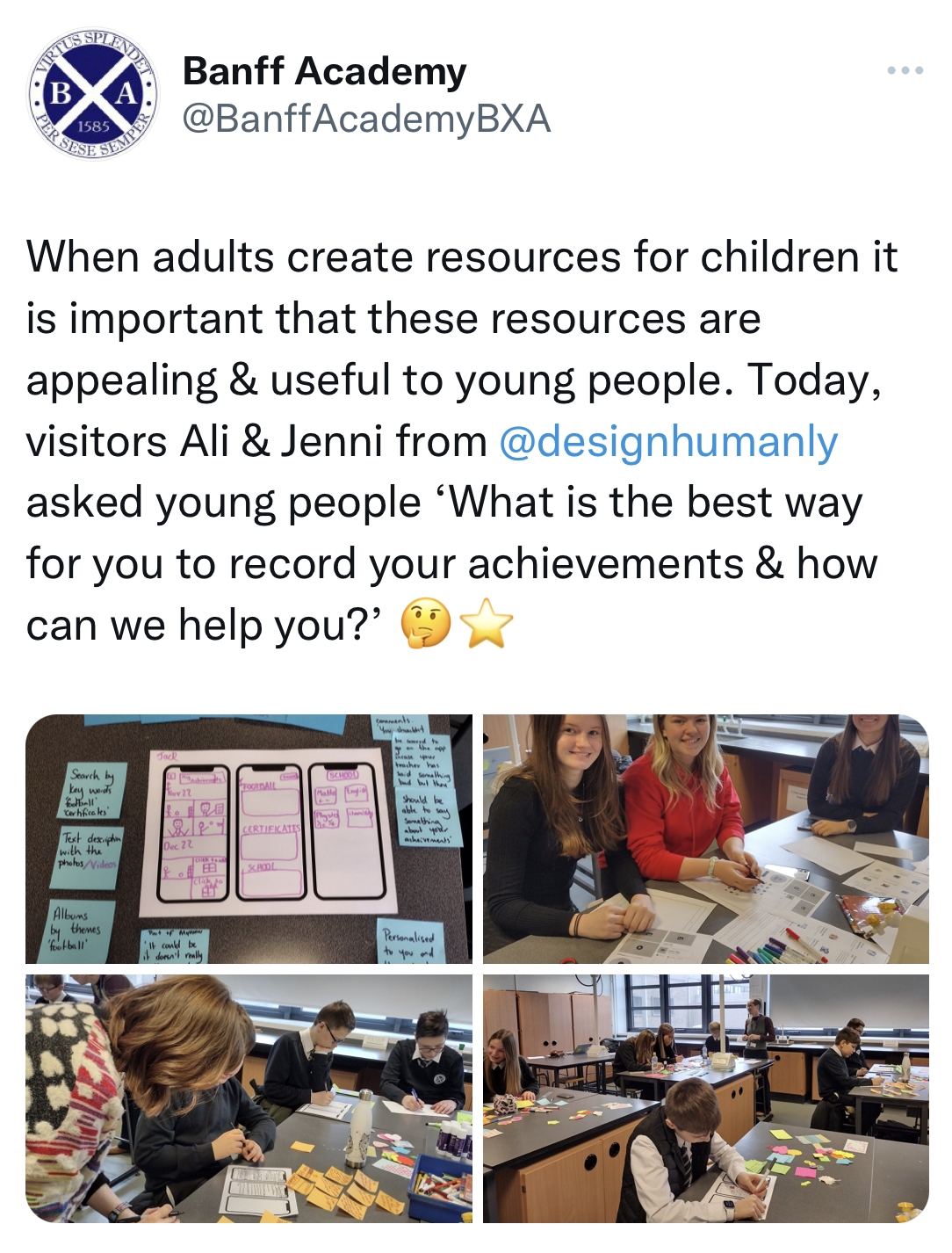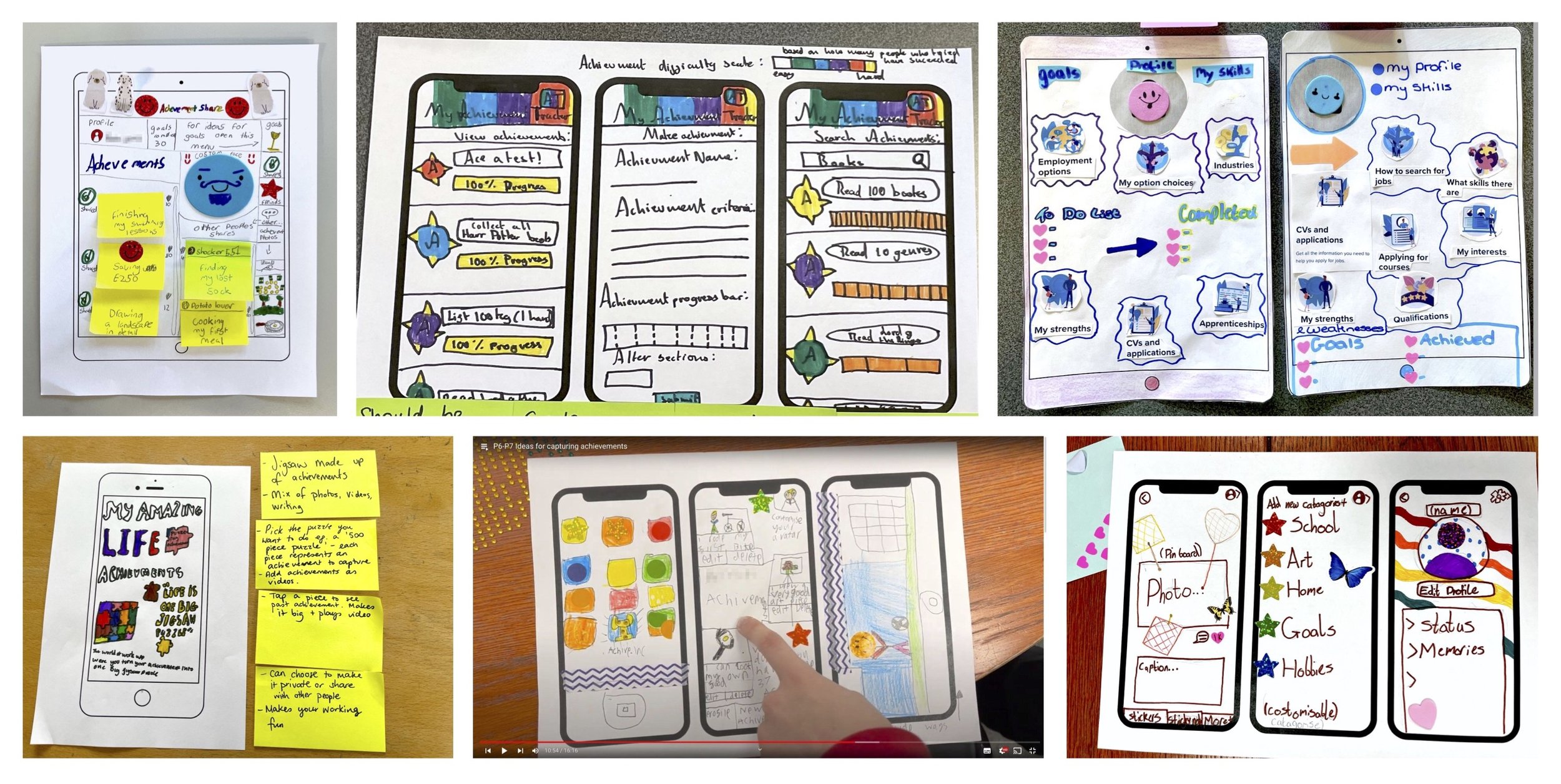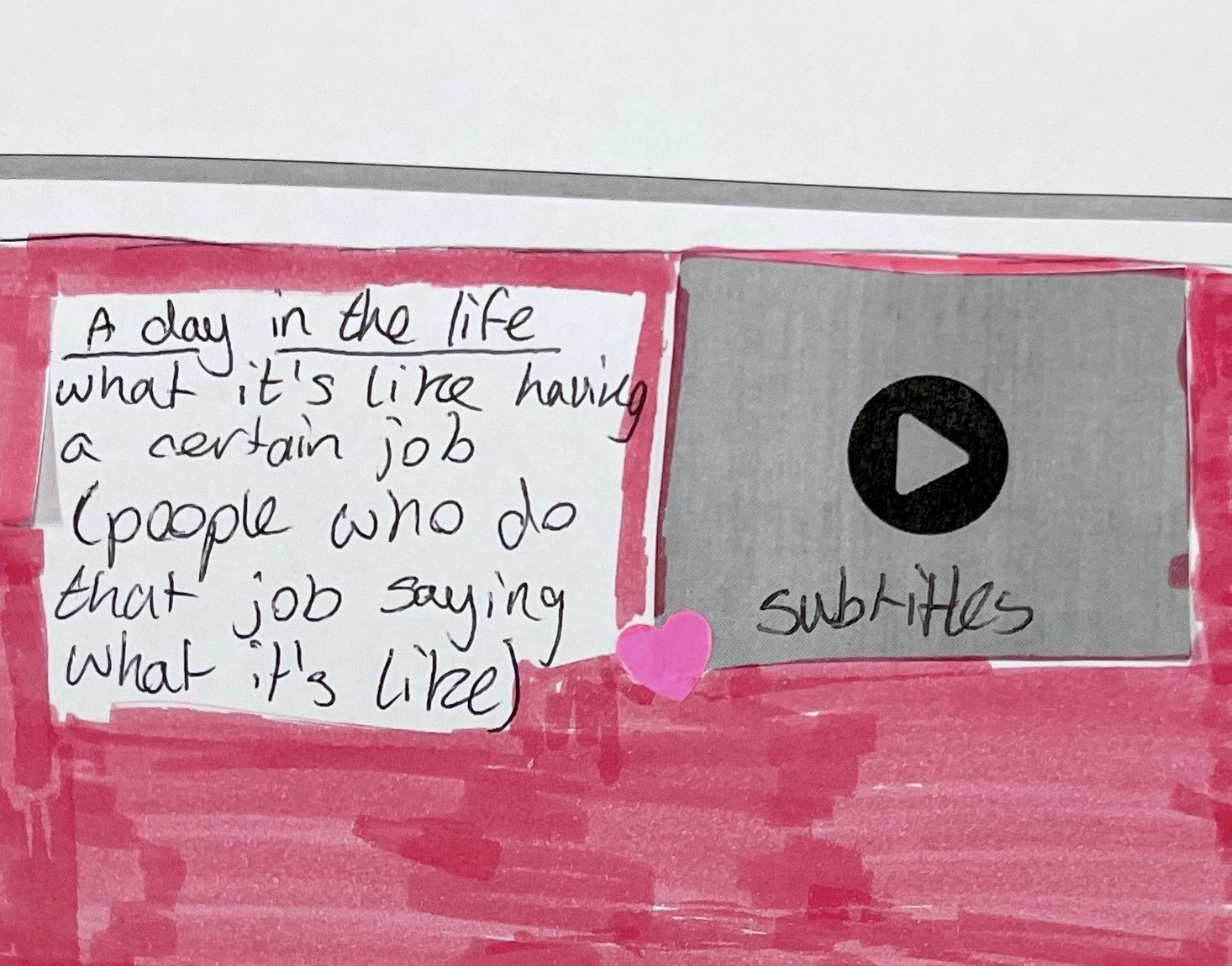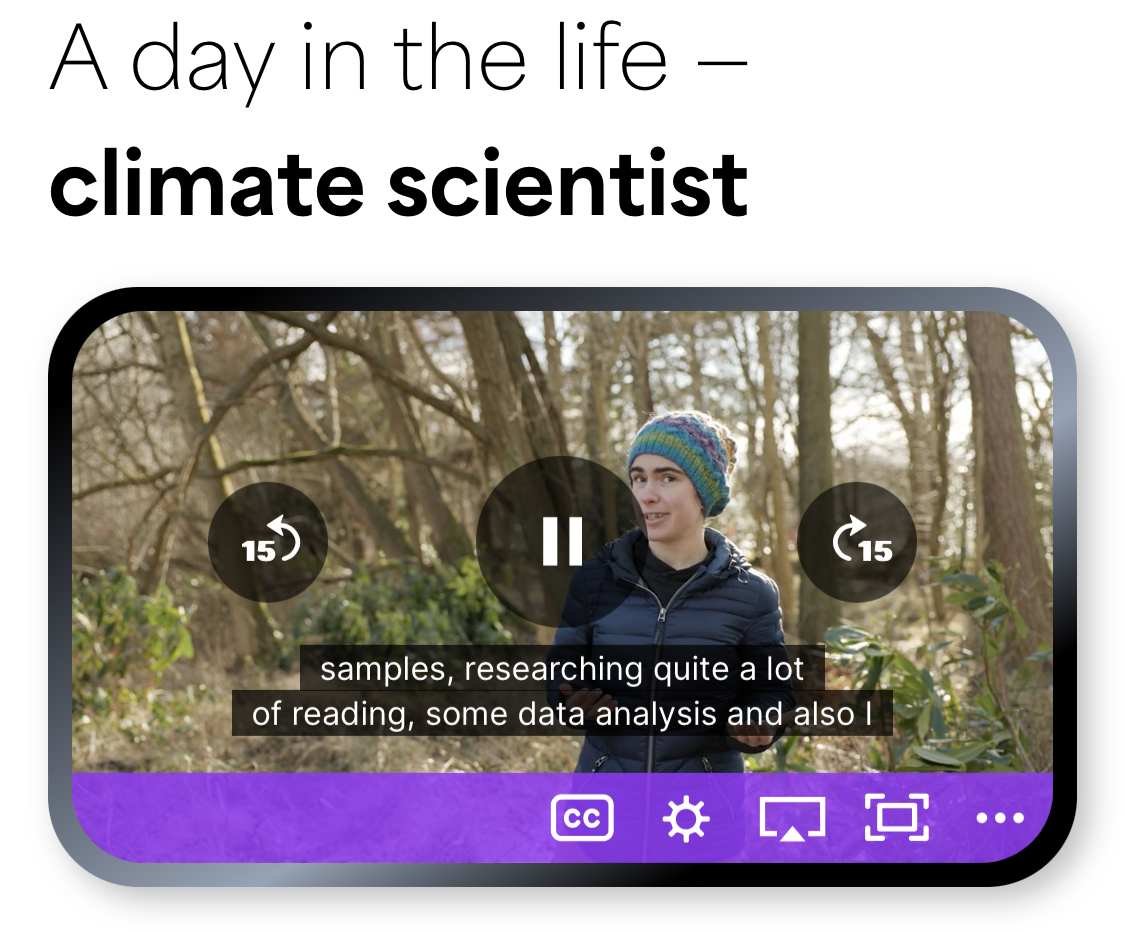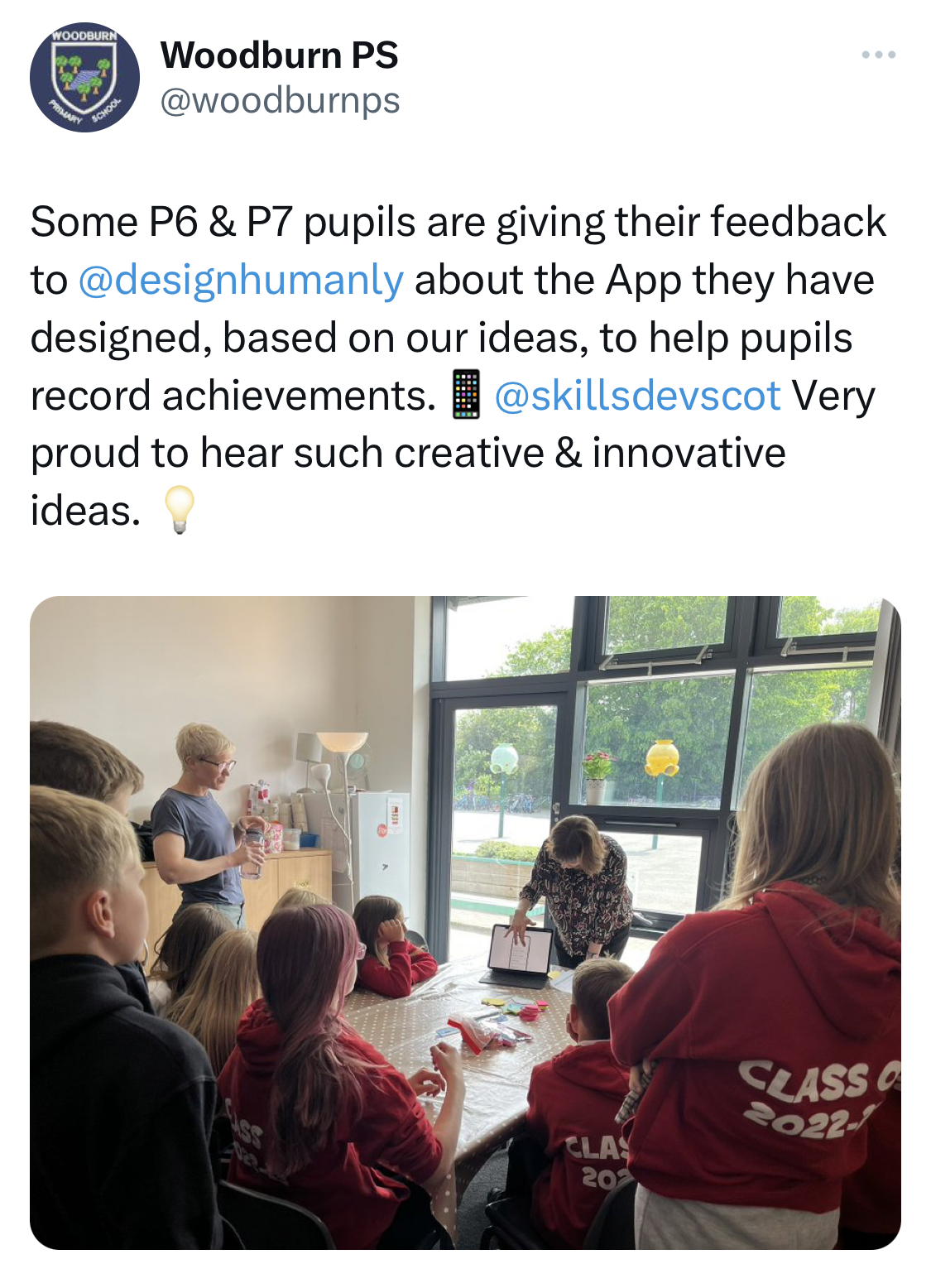Skills Development Scotland | Co-designing the future of My World of Work
Skills Development Scotland engaged Humanly to lead the co-design of exciting new features of My World of Work. Humanly worked with key audiences to explore what a personalised user experience might look like, as well as how people can capture and share their skills and achievements over time.
A highly collaborative, agile approach saw Humanly and Skills Development Scotland work as one team, facilitated by a shared Miro workspace, weekly team meetings, and regular reporting to wider stakeholders.
Humanly ran a series of 24 workshops that engaged over 200 children, young people, and educators. Through an iterative process, Humanly led the generation of hundreds of ideas, development of detailed concepts and testing of clickable prototypes.
The Process
Co-creation
Humanly began by aligning closely with Skills Development Scotland to define the key themes and questions for the initial co-creation sessions. To explore potential new My World of Work features in a broad, open-ended way, Humanly developed a toolkit of creative and interactive activities. This included making mock-ups of designs, exploring current practices, and using personas to explore how educators envisaged different features working in different contexts.
A highly adaptive approach was tailored to children and young people, with real-time adjustments ensuring sessions were enjoyable, engaging, and insightful. Stringent safeguarding measures were also coordinated with schools for the protection of children and young people.
In total Humanly ran 24 co-creation workshops, involving 16 schools and colleges, across 9 local authority areas. These workshops involved 164 children and young people aged 10 to 18 with a diverse range of experiences and needs, for example disabled young people, neurodivergent young people, LGTBQIA+ young people and young people from Gypsy and Traveller communities. Co-creation was also conducted with 58 practitioners to capture their valuable perspectives and ideas.
Young people responded to design challenges with impressive array of detailed and creative designs. These were photographed and analysed in detail, as well filming video walkthroughs with consent to capture the richness of their ideas. This enabled the Humanly team to revisit designs and develop a deep understanding of nuances and detail in participants’ own words. These videos also proved powerful in communicating children and young people’s enthusiasm, excitement and clarity of vision to stakeholders.
A selection of these video walkthroughs, shared with consent from children and young people of a range of ages, can be seen here:
Concept development and user testing
Humanly synthesised all of the ideas generated as well as considering their desirability, viability, and feasibility. The concepts assessed as having the most potential were taken into the next phase of development.
Humanly developed initial wireframes to bring participants’ ideas to life, illustrating how key features could work in practice. The Humanly team then collaborated with a UX designer to develop an initial clickable prototype.
Humanly took this prototype back to children and young people involved in earlier idea generation, running prototyping sessions with 29 children and young people in a primary, secondary and special school. A demo was followed by a group discussion, user testing, and a creative activity to add feedback and ideas to printed wireframes.
The children and young people involved were very articulate in expressing what they liked about the concept as well as the things that were missing or that didn’t quite work for them. Valuable insights were gained around accessibility, usability, desired features and functionality, as well as ideas for improving the design.
The Humanly team meticulously analysed and synthesised the results, before further collaboration with Skills Development Scotland and a UX designer to produce a refined prototype and actionable recommendations to shape the product build.
The Outcomes
In June 2024 an updated version of My World of Work was launched, incorporating young people’s designs and key learning from early-stage prototyping.
The direction for the product was genuinely driven by children and young people’s ideas, providing an exemplar of meaningful participation in the design process.
Over 30,000 young people have created a Learner Profile since this feature was introduced on My World of Work in January 2025.
Engagement with the ‘My Achievements’ and ‘My Profile’ tools has been high, both co-designed with young people as part of Humanly’s work.
The Impact
Over 160 children and young people in Scotland were involved in an engaging, inclusive and rewarding process.
This included the opportunity to see their initial ideas come to life, and to provide ongoing feedback and input on prototypes.
The insights and lessons from this project are being widely shared to inform and inspire other work.
This includes a forthcoming paper by Skills Development Scotland and Education Scotland, as well as blog posts and talks, including at the Service Design in Government conference and Digital Leaders Week.
Additionally, Humanly conducted co-design training for 40 Skills Development Scotland staff.
This developed the organisation’s capacity to embed co-creation approaches in their future work.


